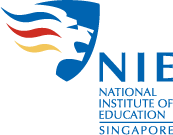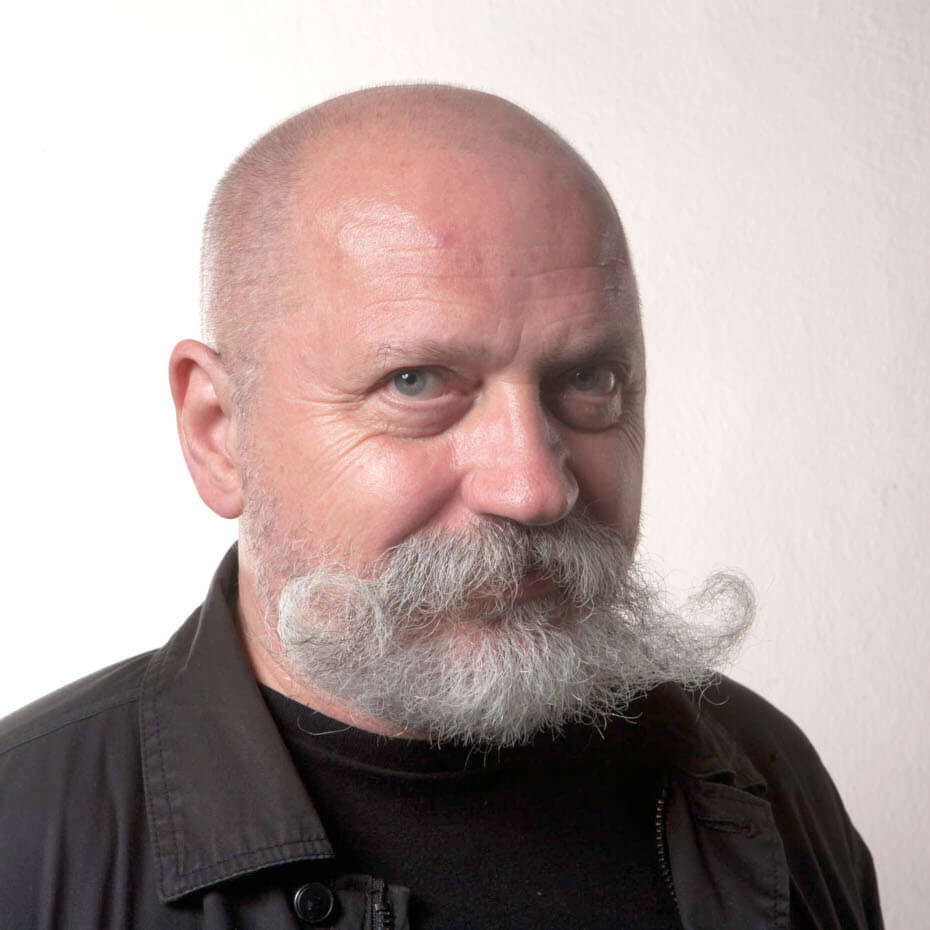Fragmented is temporarily placed at the VPA Facility Room NIE3-03-36. Please contact Rona at 6219 6095 to arrange for viewing. You can also find a beautiful mosaic wall mural aptly titled the Interchange at the Dhoby Ghaut train station that was created by Milenko Prvački and his wife, Delia, to celebrate Asia’s rich artistic legacy.
Milenko Prvački, Singapore’s iconic contemporary visual art maker / educator, is creating stunning ‘visual dictionaries’ by incorporating the ‘everyday’ into his paintings as well as pedagogy, to connect his art with the people.
| Read More |
Are arts, and more specifically, contemporary abstract visual arts, still relevant in today’s digitised world?
Arts will always be relevant to us at any period of our history. Arts engage us, capturing the essence of our social life and anticipating our future. Through the visual artworks of each period in our history, you can study and appreciate the life of people at that time, and often glimpse upon their hopes and aspirations. What has changed in recent times, perhaps, is the speed in which new artforms are being generated and promulgated to the masses through the Internet and social media. It used to take years, decades and centuries even, for a genre of artform to be developed, propagated, and finally, accepted by the public at large. Today, anyone can create art in every form and medium, limited only by one’s imagination. This easy access to arts has in fact made them timelier and more relevant to the public. The creative process has also become more experimental and exploratory as the artforms adapt to evolving social and cultural dynamics, rather than staying transfixed and outmoded.
You have created a distinct style of abstracting everyday symbols in your art. What has inspired you to pursue this genre?
As a youth growing up in former Yugoslavia, and schooling in Romania, I left Eastern Europe to live in Singapore some two decades ago. I brought with me precious few words of English. Art became a very important channel for me to express myself as I inspect and question the alien world around me: what are we, why are we the way we are, what are our dreams? I avoided classical narratives and made use of the ability of visual arts to transcend language and culture barriers to create an artform where dislocated cultural elements were assembled to form a picture that could be read like individual words in a dictionary. Fragmented is a good example of such a visual dictionary. Through fragments of familiar social artefacts, the audience is encouraged to explore and find relevance in the context of their individual experiences. I incorporate my love for texture and tactility into my works and borrow ideas extensively from any sources I can lay my hands on. For instance, I like to use the vertical perspective and fluidity of the ink in Asian art to create big paintings on horizontal surface.
Can you tell us more about Fragmented from the artist’s perspective?
At first glance, the tapestry of fragments will come through with its expressive and colourful geometrical shapes, unified by a common colour tone. Look closer and you will realise that each element exists independently while still being an integral part of the entire visual construct. Just like all the unconnected events and relationships in life coming together to form a coherent and meaningful experience. The fragments may seem incompatible to some, but I always like to say that in art, there is no victim, just another critic. You have to be willing to take some risks and explore. It’s part of the experimentation of contemporary art which I have found liberating. If you were to compare the static nature of visual arts with fast-paced media, like videos and music, visual art is certainly less competitive in terms of its ability to stimulate and engage the audience. It is a contemplative artform, which like good wine, is meant to be taken slowly and ruminated to fully savour its charms. Visual art appreciation cannot be rushed.
As an art educator, what kind of roles do you think art could play in education?
Arts are important to enrich the souls and spirits of people. They question the world around us and enable us to look at things from different perspectives. The kind of curiosity and creativity that arts can foster is useful in everything that we do, from research and operations to manufacturing and education. I think art education should start early from primary schools and extend into secondary schools and junior colleges, possibly as a non-graded subject, so as to cultivate a good appreciation of arts and beauty in our students as part of their holistic development. In fact, it was for this reason that I have set up the Tropical Lab at LASALLE and regularly organised art jams and experimentation on campus in collaboration with MOE, teachers and students. As for those who wish to pursue art professionally, we should encourage them by creating the environment and providing opportunities where they can thrive and succeed as artists locally as well as internationally.
What do you think are some of the challenges in local art scene?
When I first came to Singapore, I remember there was only one public art gallery in the National Museum. That has changed today with a good number of public and private galleries organising art exhibitions and events throughout the year. The number of artists in Singapore has grown rapidly with the establishment of more art schools catering to different learning needs and artistic aspirations. We are not short of schools and talented artists. What we lack is on the demand side. For the industry to grow, we need more people to appreciate local arts and actively support local talents by buying their works. However, being a pragmatic bunch, most Singaporeans are not quite the romantics who will fall head over heels for the arts. Another hurdle, and a major deterrent for young and aspiring artists, is the high cost of practicing art in Singapore.
Any advice for our teachers on how they could nurture art in their classrooms?
I often tell my students that they should not wait for inspiration to drop from the sky but to seek it out actively, whether it is through reading, travelling, history, socialising or anything that can feed and stimulate the imagination. Teachers can help their students by developing a more disciplined approach to broaden their horizons and general knowledge. Just as good teachers can inspire young artists, careless instructors can kill their passion. Teachers should also be aware of the huge influence they have on their students and learn to use it wisely to guide their students towards expressing their ideas and worldviews openly and independently through the arts.






